Understanding Diamond Ring Appraisal Value
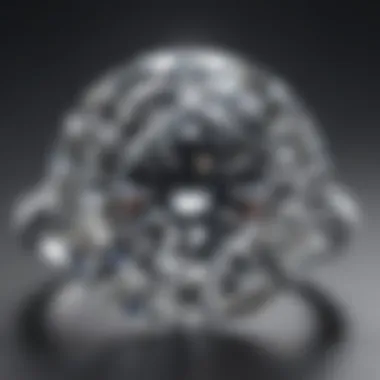
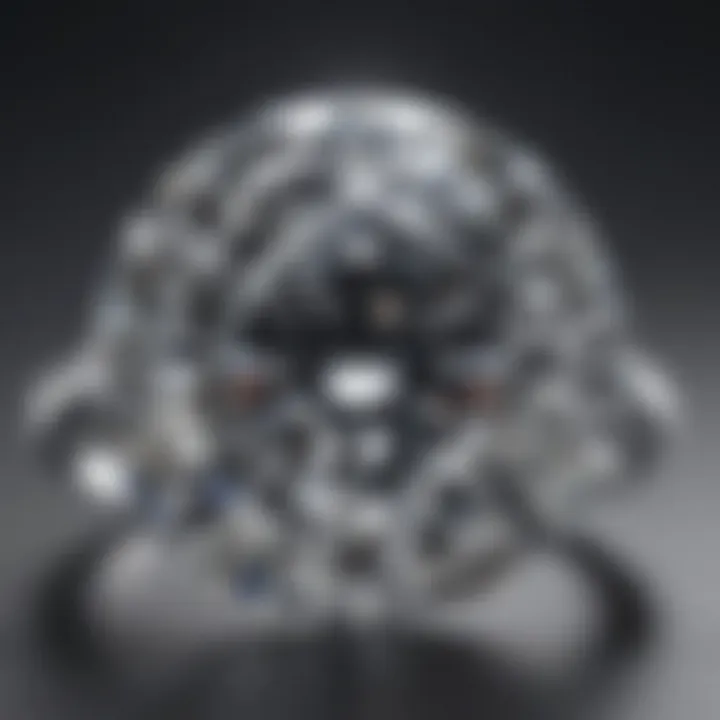
Intro
Determining the worth of a diamond ring goes beyond a mere glance at its sparkle or size. For anyone venturing into the world of diamond investments, understanding the factors that contribute to appraisal value is paramount. This isn’t just about the physical stone or its embellishments; it involves an intricate dance of market dynamics, expert insights, and emotional nuances that can affect valuations significantly.
Navigating this maze can feel overwhelming for both novice buyers and seasoned collectors. Thus, grasping the essential concepts and frameworks will provide critical guidance, ensuring that decisions made are both informed and strategically sound. As such, this article will unpack the vital elements of diamond appraisal, shedding light on how to approach investing in these gems with confidence.
Key Terms Explained
Fundamental Concepts
When discussing diamond appraisal, it’s useful to familiarize oneself with a few foundational principles:
- The Four Cs: This is a central theme in diamond evaluation, consisting of:
- Certification: Authenticity is vital in diamond appraisal. Industry-standard certificates, such as those from the Gemological Institute of America (GIA), serve as benchmarks for a diamond’s quality, ensuring potential buyers of its legitimacy.
- Market Trends: The diamond market is subject to various trends influenced by factors like consumer preferences, economic shifts, and global logistics; understanding these helps in predicting price movements.
- Emotional Value: It may sound subjective, but the personal significance attached to a diamond piece can heavily influence its perceived worth. An engagement ring, for instance, may carry sentimental value that surpasses its market price.
- Carat: Refers to the weight of the diamond. Larger stones typically command higher prices.
- Cut: Describes how well the diamond has been shaped and polished, impacting its brilliance.
- Color: Measures the hue of the diamond, where less color (near-colorless diamonds) is usually more sought after.
- Clarity: Indicates the presence of inclusions or blemishes; the fewer there are, the higher the value.
Glossary of Investment Terms
To better equip oneself within this realm, here are a few relevant investment terms:
- Liquidation Value: The estimated amount that an item could fetch in a quick sale.
- Appreciation: The increase in value over time, which can be of utmost significance for an investment.
- Resale Value: The estimated value of a diamond when it’s time to sell, influenced largely by the current market.
By grasping these terms and concepts, readers can navigate the complex world of diamond valuation and engage with it in a more meaningful way.
Prologue to Diamond Ring Appraisals
Understanding diamond ring appraisals is a crucial step in navigating the often complex world of diamond valuation. Appraisals play a significant role in not just determining the financial worth of a piece, but also in influencing decisions related to insurance, resale, and personal finance. For anyone who possesses or is considering owning a diamond ring, getting a grasp on appraisal values is paramount. It equips buyers and owners with invaluable knowledge on what they are holding and can serve as a protective measure against undervaluation.
An appraisal takes into account various factors, intertwining both tangible measurements and intangible perceptions. By delving into appraisal values, one not only learns about the worth of a diamond ring but also what influences these numbers. The nuances of market demand, ethical considerations, and emotional attachments all come into play when assessing value. This layered understanding significantly enriches one’s appreciation and investment decision-making process.
Overview of Appraisal Values
The term "appraisal value" refers to the estimated worth of a diamond ring based on several variables. This value is mostly determined through a careful evaluation process conducted by a professional appraiser. One primary element of this valuation is understanding the diamond's characteristics as defined by the Four Cs: cut, color, clarity, and carat weight. Each of these aspects contributes differently to the final appraisal value, thus showing why their assessment is so critical.
Moreover, other factors such as market trends, unique characteristics of the diamond, and additional embellishments or designs can all affect the overall value. Appraisal values also aid in establishing a baseline for insurance purposes, ensuring that in case of theft or damage, one can make a claim that reflects the true worth of the piece.
Significance of Appraisal
The significance of an appraisal cannot be overstated; it transcends the mere price tag on a ring. For potential buyers, an accurate appraisal offers peace of mind, confirming they are making a sound investment. For sellers, it provides leverage and assurance when pricing their jewelry in a fluctuating market. In a world where diamonds are often touted as timeless investments, understanding their value is not just for buyers but also crucial for sellers.
"An accurate appraisal can save you from being left in the dust, particularly in the event of an accident or misfortune."
Moreover, appraisals foster transparency in transactions, allowing both parties to engage in discussions based on agreed-upon assessments. It’s worth noting that unlike other commodities which have fluctuating market prices, diamond appraisals blend subjective judgments with quantitative metrics, making it important for the owner to engage with competent and reputable appraisers.
As investors, being armed with appraisal knowledge can also yield better long-term financial strategies. After all, knowing the real worth of your diamond ring, and how it can change through the years, gives you the upper hand in navigating the jewelry market.
Factors Influencing Appraisal Value
When it comes to understanding how a diamond ring is valued, the appraisal process is a tricky business. The appraisal value reflects various factors that intertwine, influencing how much someone might pay for a ring. It’s not just about aesthetics; a plethora of elements comes together to forge the ultimate worth of a diamond. This section highlights the key points that will be discussed, illuminating on why these factors matter immensely in the diamond market.
The Four Cs: Cut, Color, Clarity, Carat
Importance of Cut Quality


The cut of a diamond is the masterstroke of artistry that brings it to life. A diamond's cut quality is vital, as it determines how well the stone reflects light, creating that glittering effect people covet. A well-cut diamond can holographically dance with light, showcasing brilliance and fire, while a poorly cut diamond can appear dull and lifeless, despite potentially having good clarity or carat weight.
When you hear “cut,” think of the angles and proportions that govern the stone. It’s a meticulous process; those precise angles impact how light interacts with the diamond. A popular choice for discerning buyers is the round brilliant cut, famous for its ability to maximize brilliance. However, variations like princess or cushion cuts can offer unique charm.
One drawback? A beautiful cut can increase the price significantly, making buyers weigh their implications carefully in terms of budget versus aesthetics.
Understanding Color Grading
Color grading of diamonds isn’t about a fancy paint job; rather, it refers to the subtle shades of color present in a stone. The grading scale ranges from D (colorless) to Z (light yellow or brown), and the difference is often barely perceptible to the naked eye. But this seemingly minor detail holds significant weight when appraising a diamond.
Buying a colorless diamond can be beneficial as they command a higher market value. For example, a D-color diamond often stands out as the benchmark for quality. However, those with minimal tint, like G or H grades, can offer a great value, especially when they’re set in certain metals that enhance their color.
The trade-off revolves around aesthetics and affordability; many buyers find good deals in near-colorless stones that don’t dramatically impact the appearance.
Evaluating Clarity Levels
Clarity in diamonds refers to the absence of inclusions and blemishes, attributes that can significantly affect their evaluation. Inclusions are internal flaws, while blemishes are external. The presence or absence of these can influence both beauty and price. Many people think “bigger is better,” but in the world of clarity, minute can be mighty.
The Gemological Institute of America (GIA) assigns clarity grades, from Flawless (no inclusions under 10x magnification) to Included (blemishes visible to the naked eye). Higher clarity diamonds can dramatically affect a diamond’s appeal. Yet, buyers might discover that diamonds with slight imperfections can maintain charm and still fit the bill without breaking the bank.
A unique feature about clarity is that to the untrained eye, many inclusions can be invisible. This means savvy shoppers often get good bang for their buck by selecting diamonds that offer just a hint of inclusions.
Carat Weight Considerations
Carat weight is perhaps the most recognizable element among the Four Cs. It’s a straightforward measurement; one carat equals 200 milligrams. That said, a bigger diamond doesn’t always translate to a higher value. The price can skyrocket when carat weight reaches those milestones where buyers typically expect significant size.
Many enthusiasts suggest looking at specific carat weights; for instance, a 1.0-carat stone can see a noticeable price jump from.9-carat stones, but the visual difference can be minimal. Consequently, going slightly under these traditional thresholds can open doors to substantial savings without compromising much on aesthetic appeal.
One challenge here is the tendency for larger carats to dominate the market. But as we’ve seen, values come from more than just size; it’s about finding that balance between personal preference and market opportunities.
Market Demand and Supply Dynamics
Diamond valuation doesn't exist in a vacuum. The ebb and flow of demand and supply in the market decisively shape the appraisal values. When demand outstrips supply, values can surge, making the whole appraisal process a reflection of broader economic conditions. On the flip side, if the market becomes saturated with diamonds, values may drop, impacting how appraisals are seen in the industry.
With trends shifting continually—whether it’s ethical sourcing of diamonds to sustainability—understanding these dynamics can give investors a competitive edge. The interplay within this market is a complex landscape, vital for anyone looking to navigate the choppy waters of diamond investments.
Professional Appraisal Methods
Understanding professional appraisal methods is essential for anyone interested in the value of diamond rings. These methods ensure that the valuation is accurate, reliable, and reflective of current market conditions. Knowledge of these established techniques can guide investors and buyers alike through the complexities of diamond valuation. These methods can help in assessing not just the physical attributes of a ring but also the intrinsic worth that comes with its historical and emotional significance.
Standard Appraisal Procedures
When it comes to appraising a diamond ring, the process often begins with standard appraisal procedures. This procedure serves as a benchmark that helps ensure consistency and reliability across various appraisers.
Visual Inspection Techniques
Visual inspection techniques are foundational to the appraisal process. This method is about observing the diamond ring closely and assessing its features with the naked eye. A trained appraiser can often spot discrepancies or unique characteristics in the ring that might not be evident through other methods.
One key characteristic of visual inspections is its ability to quickly assess surface flaws and crafting attributes. It's economical and doesn’t require the use of extensive tools, making it an appealing choice for many appraisers. However, it does have its limitations; the most obvious being that it can't provide the precise grading that machinery can. More so, lighting and the appraiser's experience heavily influence the outcomes of this technique.
This method stands as a beneficial approach especially for initial assessments, allowing the appraiser to discern if more in-depth methods are needed down the line.
Utilizing Gemological Instruments
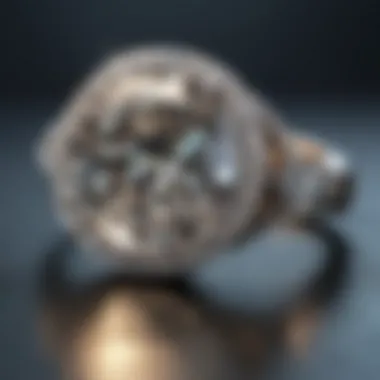

Gemological instruments take appraisal to the next level. These tools, such as loupe magnifiers, refractometers, and spectroscopes, are for a more scientific approach to determining the accuracy of a diamond's value. Utilizing gemological instruments adds a layer of precision that a simple visual inspection can't achieve.
The key characteristic of using these instruments is that they provide detailed insights into the properties of diamonds, including cut, clarity, and even carat weight. This precision makes them a popular choice among professional appraisers, as they can better assure clients of the authenticity of their appraisals.
However, one must understand that while utilizing these instruments does enhance reliability, it also requires specialized training and expertise. Improper use can lead to erroneous evaluations, so the appraiser's skill is paramount.
Role of Certification in Appraisal
Certifications play a crucial role in the appraisal of diamond rings, as they provide a verified record of a diamond's qualities and values. Often, this certification is essential for buyers and sellers to ensure legitimacy in their transactions. Knowing how certifications work can markedly influence one's understanding of diamond appraisal.
Impact of Third-Party Grading
Third-party grading organizations evaluate diamonds based on stringent criteria, helping maintain an objective standard in the industry. The impacts of these organizations are significant: they lend credibility and trustworthiness to the appraisal process.
One of the key characteristics of third-party grading is its impartiality. Since these organizations are not associated with sellers, their evaluations can often be seen as more trustworthy and unbiased. They also help in establishing a consistent grading scale, making comparisons easier for buyers in the market.
Despite numerous advantages, the challenge with third-party grading can sometimes be the length of time it takes to obtain a report, which may delay the sale or purchase of the ring.
Understanding Certification Bodies
Diving into the specifics of certification bodies offers valuable context for the appraisal process. These institutions set the standards for evaluating diamonds, determining how they are graded, and ensuring that guidelines are clear and understandable. Knowing the most reputable certification bodies informs investors and buyers about potential quality and reliability.
A significant characteristic of these organizations is their authority and recognition in the industry. Popular ones include the Gemological Institute of America (GIA) and the American Gem Society (AGS). Choosing diamonds that come with a certification from these bodies often means getting a ring with a well-documented history of quality.
However, a pitfall exists as well: not all grading bodies are created equal. Some may not have the same level of respect or rigorous standards, leading to potential pitfalls for uninformed buyers.
Emotional Value vs. Market Value
When it comes to diamond rings, the conversation often veers away from numbers and calculations to the heart of what these sparkling pieces represent. This section explores the intersection between emotional value and market value, two elements that can both influence decision-making but often pull in different directions. Understanding this balance is not just an academic exercise; it’s key for attaining a clear perspective whether you're considering a purchase, a gift, or assessing your own assets.
Understanding Sentimental Factors
Sentimental value is intrinsic and deeply personal. A diamond ring may symbolize a significant milestone such as an engagement, wedding, or even a family legacy. The emotional weight tied to these events can lead individuals to assign a value that transcends mere market metrics. For instance, a ring once worn by a grandmother may evoke memories and feelings that no amount of money can reflect.
Consider a bride who wears her late mother’s diamond ring. Its market value, evaluated on the four Cs, may not hold a candle to the familial bond and the stories it carries. This attachment often influences how individuals approach the ring's appraisal, leading to valuation perspectives that might baffle a market analyst. Unlike a stock or a bond, which are purely numbers-driven, emotional ties can create a much more complex scenario where practicality meets nostalgia.
Challenges in Valuing Emotional Worth
Valuing emotional worth is not a straightforward affair. Individual experiences and relationships heavily factor into how one perceives a diamond ring’s significance. The challenge then lies in reconciling these subjective feelings with established market values. Here are a few points to consider:
- Subjectivity: What is priceless to one person might be mere stone to another. Emotional attachments vary widely.
- Market Metrics: Appraisers often rely on quantifiable data. This can lead to pitfalls when emotional ties significantly outpace financial worth.
- Resale Considerations: If you ever decide to sell that treasured ring, emotional value will rarely translate into actual cash. Buyers will focus on the ring’s characteristics and market trends rather than your cherished memories.
- Familial Pressure: Inheritance can complicate matters further. Multiple heirs may interpret the emotional significance in different ways, leading to disputes about value.
As diamond investors or owners explore their options, making sense of these emotional vs. market valuations becomes increasingly vital. Balancing both perspectives can aid in guiding decisions regarding insurance, selling, or simply holding onto a cherished item. In a world skewed heavily towards data, sometimes one has to look beyond the ledger to appreciate what those tiny, gleaming gems really mean.
Trends in the Diamond Market
Staying current with trends in the diamond market is crucial for anyone considering investing in diamond rings. As the market evolves, certain patterns arise that can potentially influence the appraisal values of these precious stones. Understanding these trends not only informs the investor about where the market is heading but also aids in making educated decisions that maximize return on investments. In a world that is constantly changing, acknowledging the trends allows investors to stay several steps ahead, effectively navigating through the complexities of diamond valuation.
Influence of Fashion and Culture
Fashion and culture play pivotal roles in shaping the jewelry market. A diamond ring is often not just a piece of jewelry; it’s a statement of style, values, and sometimes even a direct reflection of societal trends. For instance, in recent years, there’s been a noticeable shift towards more vintage-inspired designs, a trend that seems to be gaining momentum among younger consumers who may resonate with a mix of nostalgia and individuality.
Moreover, celebrity engagements and red carpet appearances can significantly boost the popularity of particular styles or diamond shapes. The engagement ring of a high-profile celebrity can send shockwaves through the jewelry market, creating a spike in demand for similar designs. For example, when Meghan Markle sported her three-stone diamond engagement ring, the popularity of such settings soared, influencing both consumer preferences and appraisal values.
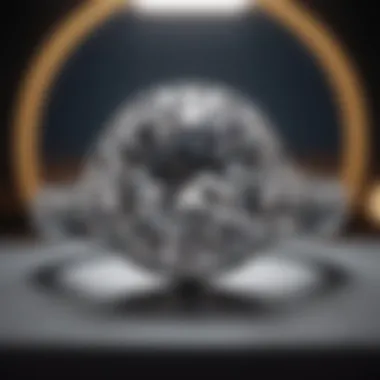
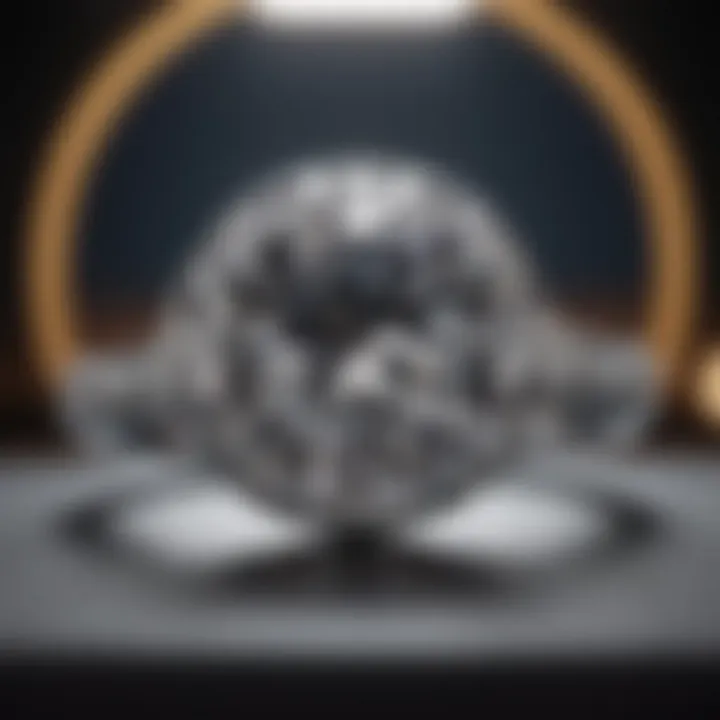
Importantly, the cultural context of diamonds can shift perceptions as well. Different cultures may have varying meanings attached to diamond rings. In some societies, diamonds symbolize love and commitment, while in others, they hold significant cultural heritage. This cultural variability can impact market demand, shifting appraisal values as trends change.
Sustainability and Ethical Considerations
In today’s conscious consumer landscape, there’s a significant growing emphasis on sustainability and ethical sourcing within the diamond industry. This is not just a fleeting trend but a fundamental shift in how consumers think about their purchases. As awareness around conflict diamonds and the environmental impact of mining increases, many buyers are now seeking ethically sourced or lab-grown diamonds. This demand reshapes the market and can affect the appraisal values accordingly.
When an investor chooses a diamond ring that is ethically sourced, it can often demand a premium price. Ethical certification, which verifies that diamonds have been sourced responsibly, adds another layer to appraisal value in the current market. Consumers are becoming more willing to invest in these diamonds, recognizing their value beyond just the physical stone.
Conversely, natural mined diamonds may struggle to maintain their value if consumers increasingly turn to alternatives. Therefore, understanding the market dynamics influenced by ethical considerations is vital for anyone evaluating the potential worth of their diamonds.
"A diamond is forever, but its value may change with the times."
In summary, the landscape of the diamond market is deeply intertwined with fashion trends, cultural significance, and ethical considerations. As these elements shift and evolve, so too do the appraisal values of diamond rings. For investors, keeping an eye on these trends will provide not only insights into potential future valuations but also an understanding of consumer preferences that drives demand.
Navigating the Appraisal Process
Navigating the appraisal process for diamond rings is much like driving through a winding road. Knowing the right turns can lead to successful outcomes, ensuring an accurate assessment of your valuable asset. Whether you’re looking to sell, insure, or simply understand the worth of your ring, comprehending this process is crucial. Key elements include selecting a qualified appraiser and preparing adequately for the appraisal itself. Each of these steps plays a critical role in ensuring a smooth journey through the valuation landscape.
Choosing a Qualified Appraiser
Choosing a qualified appraiser isn't just about picking a name from a hat. It's about finding someone who knows the ins and outs of diamonds like the back of their hand. A good appraiser should possess not only the necessary certifications but also a solid reputation in the industry. They should understand the gems' nuances, having dealt with various characteristics and quality indicators.
In your quest for a suitable appraiser, consider if they are affiliated with respected organizations, such as the American Society of Appraisers or the Gemological Institute of America. Recommendations from trusted jewelers can also point you in the right direction. A qualified appraiser needs to walk the walk, discussing previous appraisals and providing references. Reviews online can also give you insight into their reliability. In this regard, connections can prove invaluable, as a well-recommended appraiser may already have a track record of producing fair and thoughtful evaluations.
Preparation for Appraisal
Preparation is key to ensuring that your appraisal goes off without a hitch. Just like studying for an exam, being organized is essential. You want to gather as much information about your diamond ring as possible to provide the appraiser with a full picture.
Documentation Requirements
When discussing documentation requirements, it’s crucial to have all papers organized ahead of time. This might include prior appraisal certificates, purchase receipts, and any warranty documentation. Having these in hand is not just about impressing the appraiser; it streamlines the process and provides vital context for the evaluation. Moreover, it's beneficial because it can substantiate the diamond's history, which impacts its appraisal value. Without the right paperwork, you could end up losing out on the ring's true worth. This will allow for more accurate information to come to light, potentially enhancing the ring's value.
That said, the unique feature of having documentation is that it encapsulates the ring’s journey; it provides legitimacy to your asset. Well-kept records facilitate a transparent appraisal process, saving both time and potential misunderstandings.
Understanding Appraisal Fees
Understanding appraisal fees is as important as any other step. Fees might vary based on the appraiser's experience, the complexity of the appraisal, or even geographic location. Knowing what you’re getting into beforehand can prevent sticker shock later on. Many appraisers charge a flat fee, while others might go by the hour. This characteristic of having clear pricing strands is essential for financial planning. For some, it may turn out to be a little more burdensome than expected, so it's wise to inquire upfront about all costs involved.
Additionally, taking the time to compare various appraisers can reveal significant differences in their fee structures, allowing you to make an informed choice. An understanding of these fees equips you with the ability to budget accordingly, making it a popular topic of discussion among potential clients. A transparent appraisal fee structure can benefit both parties, as it sets expectations clearly from the get-go.
By knowing the appraisal fees upfront, you avoid the last-minute surprises and can create a smarter financial strategy for your diamond investment.
Navigating the appraisal process is filled with nuances. Following these guidelines can lead to a more informed and stress-free experience, ultimately aiding in understanding the true value of your diamond ring.
Finale and Key Takeaways
As we wrap up this exploration into the appraisal value of diamond rings, it’s crucial to consolidate the insights gained along the way. Understanding how diamond rings are appraised transcends mere monetary value; it encapsulates both the intricate craftsmanship of these stunning gems and the nuances of market dynamics that affect their worth. By mastering these elements, potential buyers and investors can make informed decisions about their purchases.
Recap of Valuation Insights
In this article, we discussed several core facets that influence the appraisal of diamond rings. Here’s a summary of those key points:
- The Four Cs: Cut, color, clarity, and carat weight are fundamental elements determining the quality and thus the value of a diamond. Each factor interacts with the others, and mastering their nuances can significantly affect an appraisal.
- Market Trends: Keeping an eye on current trends in fashion and consumer preferences gives context to how much a diamond ring might fetch on the market. What’s desirable today might not hold the same allure in a few years, making this knowledge crucial.
- Professional Appraisal Methods: Knowledge of standard appraisal techniques, along with the importance of certification from recognized bodies, adds another layer of reliability in the valuation process. You wouldn’t want to put your hard-earned money into something without knowing it’s genuine.
- Emotional vs. Market Value: While the market price of a diamond is vital, the emotional value tied to it can’t be overlooked. Sentimental factors might inflate the perceived worth for the owner, and understanding this balance is crucial when considering or appraising a diamond.
"The value of a diamond is not just in its sparkle but in the stories and memories it carries with it."
Final Thoughts on Diamond Investment
Investing in diamond rings could be seen as both a financial venture and a personal choice, depending on individual goals. While some may view diamonds solely as a commodity, others see them as lasting symbols of love and commitment. It’s essential to strike the right balance between emotional association and financial prudence.
Before diving in, consider the financial implications thoroughly. Assess market trends, familiarize yourself with the factors affecting appraisal values, and choose a qualified appraiser. Every step you take can help ensure that your investment not only shines brightly in the light but also holds its value over time.















